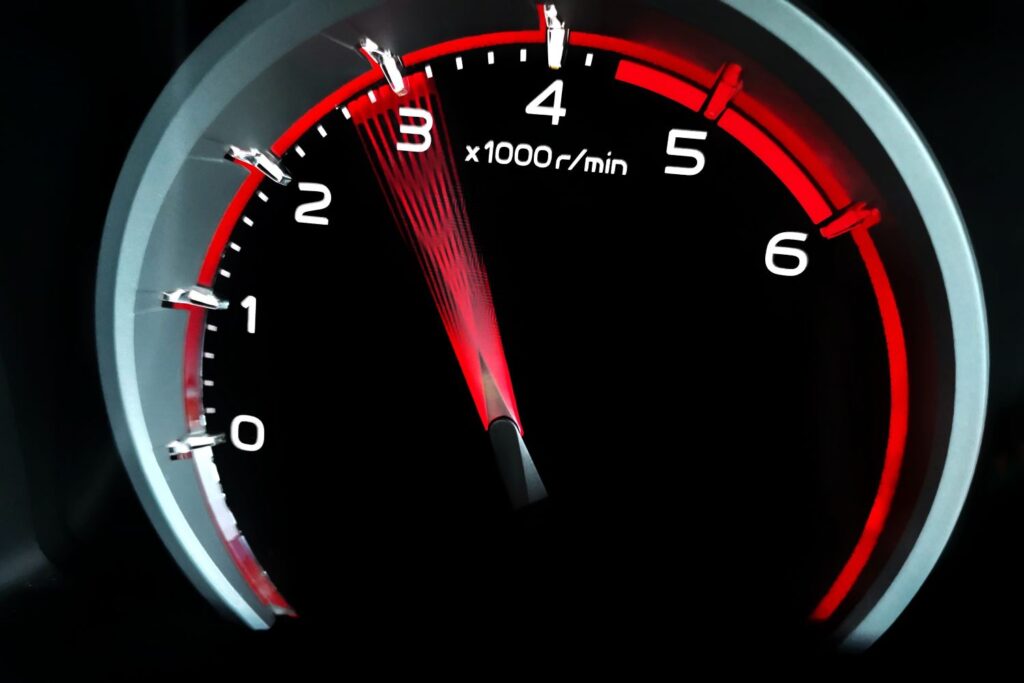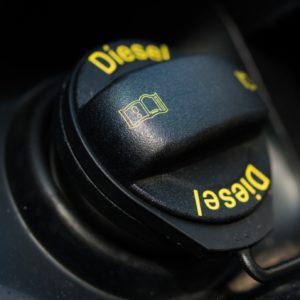Are you switching from a gasoline vehicle to a car or truck that runs on diesel? You’ll have to adjust your driving habits accordingly. If you often run your previous car at high speeds, a diesel vehicle’s lower RPM might surprise you. But you might have also heard that you need to drive your diesel car at high RPM to clean something called the diesel particulate filter (DPF). So, is it okay to drive at high RPM in a diesel vehicle?
Can You Safely Drive at High RPM For Diesel Vehicles?
There are some situations when you have to push your diesel vehicle out of its comfortable operating range. Take driving on a slip road as an example. You need to go fast, which means running the diesel engine at peak power. The same holds for overtaking other vehicles on the road. You have to go faster if you want to get ahead of the car ahead of yours, especially if the other driver is also going faster.
However, you’re not supposed to constantly keep your diesel vehicle running at high RPM. Diesel engines are designed to operate at low RPM in most driving scenarios. If you operate a diesel engine at high RPM for extended periods, it will use up more fuel for less gain and will wear out faster, leading to potential issues that need costly repairs and replacement parts.
If you drive a diesel vehicle with a manual transmission, shift to the correct gear. Driving at 55 miles per hour in 4th gear uses higher RPM and consumes more fuel than driving at the same speed in 6th gear.
What Counts as Very High RPM In Diesel Cars?
A diesel vehicle’s recommended RPM operating range depends on the engine’s RPM limit. Some diesel engines can reach higher RPM than others.
Generally, diesel engines have a low RPM limit, especially when compared to gasoline ones. Most diesel vehicles have a peak RPM between 2,500-3,000 RPM.
There are two reasons for the low RPM limit of diesel engines. First, diesel fuel burns slower than gasoline, so there’s no need for fast RPMs to generate torque. Second, rather than simply slapping the piston with the combustion event like a gas burner, diesel fuel is burning most of the way through the piston’s power stroke.
When you drive your diesel vehicle, refrain from exceeding 2,000 RPM for the most part. If you rev the diesel engine past 2,000 RPM, it uses up considerably more fuel for little gain. Instead, maintain between 1,500 and 1,800 RPM while driving at most speeds or in most gears unless you’re driving one of the higher rpm diesels described above. But note that diesels are governed, so you aren’t likely to over-rev a diesel, anyway.

Problems Caused By High RPM in Diesel Engines
When you force the diesel engine to run harder than it usually does for too long, it can develop issues that disrupt its performance and reduce its capabilities. Eventually, you might need to repair or even replace the engine.
Here are the most common problems caused by running high RPM in your diesel vehicle:
Increased Wear
Diesel engines aren’t intended to operate at high RPMs for long. So, when you rev the engine, you put a significant amount of stress on it by forcing it to operate beyond its usual range. Constantly stressed parts will wear out faster, slowly but surely affecting the engine’s performance and shortening its service life.
Reduced Fuel Economy
Whether it runs on diesel or gasoline, the engine burns fuel to generate the energy it needs to move its parts. The higher the RPM, the more fuel it burns to meet the power demand.
Past 2,000 RPM, the diesel engine uses more fuel than it needs to generate the power that you can get out of it.
Overheating
Like its gasoline counterpart, the diesel engine produces heat during operation. The higher the RPM, the more fuel the engine burns and the faster its parts move. The engine’s temperature rises higher. Note, however, that diesels aren’t as prone to overheating as gas burners.
Note that diesel engines aren’t as prone to overheating as gas burners.
– Richard McCuistian, ASE Certified Master Automobile Technician
Does the Diesel Particulate Filter Need High RPM to Work?
If you’re new to diesel vehicles, you might not know about the DPF. Alternatively, you might have been told that you need to rev the engine to make the filter work. That’s not how the emission control part works, though.
The DPF removes soot and other particulate contaminants from the exhaust expelled by the engine after combustion. When the DPF reaches the maximum amount of particulates that it can store, it burns the excess soot in a process called regeneration. If the filter can’t get rid of the soot, it clogs up, leading to potentially severe issues with the engine and exhaust system.
In modern diesel vehicles, DPF regeneration happens once or twice a month. While the process uses heat to burn soot, it doesn’t require driving at high RPM. Unfortunately, you can’t manually activate regeneration, either. Typically the engine controls add fuel for the specific purpose of regeneration.
The best way to get the DPF to burn its accumulated soot is to drive your vehicle for 45-60 minutes. It requires driving on a highway because city driving forces you to abruptly stop and start your vehicle.
You can make DPF regeneration a monthly event. Pick the nearest big town or city and drive your diesel car there for an hour. As long as you keep your vehicle in the right gear, the diesel engine will build up enough heat to activate DPF regeneration.
While you will have to raise the RPM of your diesel vehicle occasionally, you don’t need to drive it at high RPMs every time. Save fuel and repair costs by sticking to the recommended speeds and RPM range.
Any information provided on this Website is for informational purposes only and is not intended to replace consultation with a professional mechanic. The accuracy and timeliness of the information may change from the time of publication.



























